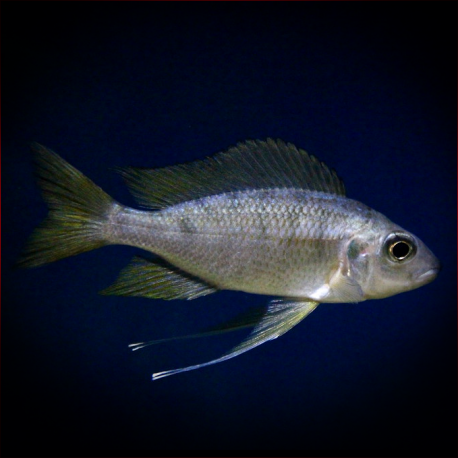More info
Datasheet
| Minimum Tank Size | 300 litres / 79.25 US gallons |
| Maximum Size | 20.0cm / 7.87inches |
| Temperature | 23°C / 73.40°F - 27°C / 80.60°F |
| Hardness | 8-25ºdH |
| pH | 7.5-9.0 |
General Description
Ophthalmotilapia Nasuta, commonly known as Nasuta Cichlid, is a species characterized by a fleshy proboscis-like growth protruding beyond its upper lip. This unique feature helps distinguish it from other members of the genus. It is found in different geographical morphs like "Kachese," "Mpimbwe," "Cape Tembwe," and "Chamba." Mixing these morphs in aquaria is discouraged to prevent hybridization.
Aquarium Setup
To house O. nasuta, a tank size of a minimum of 300 litres is recommended. The aquarium should feature scattered rock formations creating caves to mimic the rocky shorelines that the fish inhabits. A sandy substrate and ample open water space are essential, along with good biological filtration. While this species does not harm plants, hard water-tolerant varieties like Anubias or Vallisneria can be added to the setup.
Behaviour
Being a lively species, Nasuta Cichlids are best suited as the dominant fish in the tank to prevent them from becoming reclusive and losing their vibrant colors. Male individuals exhibit aggression towards other males, necessitating the presence of only one male unless the tank is exceptionally large. It is advised to keep males with a group of females to maintain harmony. Compatible tankmates include Cyprichromis species, Altolamprologus, and Julidochromis.
Feeding and Diet
Nasuta Cichlids accept a varied diet but should avoid high protein foods. It is crucial to incorporate vegetable matter into their diet, such as blanched spinach or spirulina, to ensure their nutritional needs are met appropriately.
Reproduction & Dimorphism
In a suitable tank setup with a group consisting of multiple females and a single male, O. nasuta can reproduce successfully. The male fish will create spawning sites in the substrate, displaying vibrant colors to attract females. Females are maternal mouthbrooders, carrying eggs in their mouths for several weeks before releasing free-swimming fry. Males are larger and more colorful than females, with prominent ventral fins and a more conspicuous proboscis-like growth.
Habitat and Distribution
Native to Lake Tanganyika, Nasuta Cichlids are endemic to the northwestern and southwestern coasts of the lake. They inhabit rocky shorelines at shallow depths, usually less than 5 meters, where they feed on plankton in open water. The species' distribution ranges from Kigoma to Halembe in the northwestern coast and from Isonga to Cape Kachese in the south of the lake.

